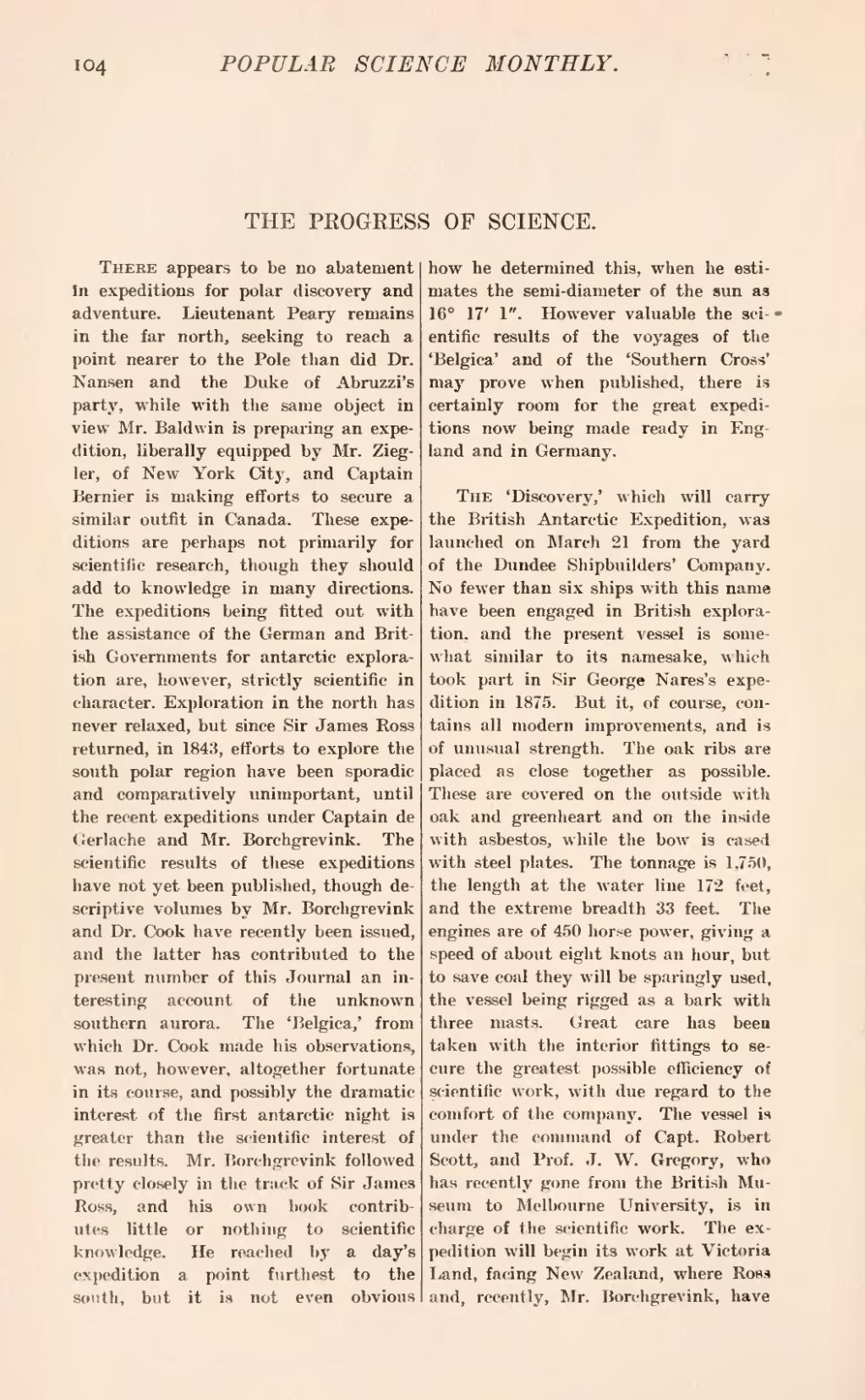There appears to be no abatement in expeditions for polar discovery and adventure. Lieutenant Peary remains in the far north, seeking to reach a point nearer to the Pole than did Dr. Nansen and the Duke of Abruzzi's party, while with the same object in view Mr. Baldwin is preparing an expedition, liberally equipped by Mr. Ziegler, of New York City, and Captain Bernier is making efforts to secure a similar outfit in Canada. These expeditions are perhaps not primarily for scientific research, though they should add to knowledge in many directions. The expeditions being fitted out with the assistance of the German and British Governments for antarctic exploration are, however, strictly scientific in character. Exploration in the north has never relaxed, but since Sir James Ross returned, in 1843, efforts to explore the south polar region have been sporadic and comparatively unimportant, until the recent expeditions under Captain de Gerlache and Mr. Borchgrevink. The scientific results of these expeditions have not yet been published, though descriptive volumes by Mr. Borchgrevink and Dr. Cook have recently been issued, and the latter has contributed to the present number of this Journal an interesting account of the unknown southern aurora. The 'Belgica,' from which Dr. Cook made his observations, was not, however, altogether fortunate in its course, and possibly the dramatic interest of the first antarctic night is greater than the scientific interest of the results. Mr. Borchgrevink followed pretty closely in the track of Sir James Ross, and his own book contributes little or nothing to scientific knowledge. He reached by a day's expedition a point furthest to the south, but it is not even obvious how he determined this, when he estimates the semi-diameter of the sun as 16° 17' 1". However valuable the scientific results of the voyages of the 'Belgica' and of the 'Southern Cross' may prove when published, there is certainly room for the great expeditions now being made ready in England and in Germany.
The 'Discovery,' which will carry the British Antarctic Expedition, was launched on March 21 from the yard of the Dundee Shipbuilders' Company. No fewer than six ships with this name have been engaged in British exploration, and the present vessel is somewhat similar to its namesake, which took part in Sir George Nares's expedition in 1875. But it, of course, contains all modern improvements, and is of unusual strength. The oak ribs are placed as close together as possible. These are covered on the outside with oak and greenheart and on the inside with asbestos, while the bow is cased with steel plates. The tonnage is 1,750, the length at the water line 172 feet, and the extreme breadth 33 feet. The engines are of 450 horse power, giving a speed of about eight knots an hour, but to save coal they will be sparingly used, the vessel being rigged as a bark with three masts. Great care has been taken with the interior fittings to secure the greatest possible efficiency of scientific work, with due regard to the comfort of the company. The vessel is under the command of Capt. Robert Scott, and Prof. J. W. Gregory, who has recently gone from the British Museum to Melbourne University, is in charge of the scientific work. The expedition will begin its work at Victoria Land, facing New Zealand, where Ross and, recently, Mr. Borchgrevink, have
